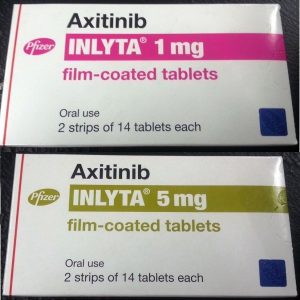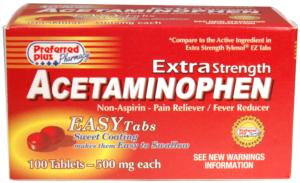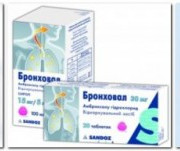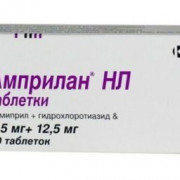Докузат натрия (мнн)
Содержание:
- Important information about all medicines
- Senokot-S
- Patient Education
- Докузат натрия инструкция
- What side effects are possible with this medication?
- What other drugs could interact with this medication?
- How does this medication work? What will it do for me?
- Before taking docusate sodium
- Dosing: Pediatric
- Dosage Forms
- How to take docusate sodium
- Trending Articles
- How should I use this medication?
- Are there any other precautions or warnings for this medication?
- Can docusate sodium cause problems?
- Warnings/Precautions
- Как работает средство?
Important information about all medicines
|
Never take more than the prescribed dose. If you suspect that you or someone else might have taken an overdose of this medicine, go to the accident and emergency department of your local hospital at once. Take the container with you, even if it is empty. This medicine is for you. Never give it to other people even if their condition appears to be the same as yours. If you are having an operation or any dental treatment, tell the person carrying out the treatment which medicines you are taking. If you buy any medicines, check with a pharmacist that they are suitable to take with your other medicines. Never keep out-of-date or unwanted medicines. Take them to your local pharmacy which will dispose of them for you. If you have any questions about this medicine ask your pharmacist. |
Senokot-S
Indications
Oral: Treatment of constipation associated with dry, hard stools and decreased intestinal motility.Prevention of opioid-induced constipation.
Action
Senna’s metabolite acts as a local irritant on the colon stimulating peristalsis.
Docusate promotes incorporation of water into stool, resulting in softer fecal mass.
Pharmacokinetics
Absorption: Docusate: small amounts may be absorbed from the small intestine after oral administration.
Distribution: Unknown.
Metabolism and Excretion: Senna: metabolized in the liver and eliminated in bile and urine. Docusate: eliminated in bile.
Half-life: Unknown.
Contraindications/Precautions
Contraindicated in: Hypersensitivity; Abdominal pain, nausea, or vomiting, especially when associated with fever or other signs of an acute abdomen; Concomitant use of mineral oil.
Use Cautiously in: Excessive or prolonged use may lead to dependence, fluid and electrolyte imbalance, and vitamin and mineral deficiencies.
Adverse Reactions/Side Effects
urine discoloration
Route/Dosage
Oral (Adults and Children >12 yr) 2 tablets once daily at bedtime; maximum 4 tablets twice daily.
Oral (Children 6–12 yr) 1 tablet once daily at bedtime; maximum: 2 tablets twice daily.
Oral (Children 2–6 yr) 1/2 tablet once daily at bedtime; maximum: 1 tablet twice daily.
Nursing implications
Nursing assessment
- Assess for abdominal distention, presence of bowel sounds, and usual pattern of bowel function.
- Assess color, consistency, and amount of stool produced.
Implementation
- This medication does stimulate intestinal peristalsis.
-
Oral:
Do not administer within 2 hr of other laxatives, especially mineral oil. May cause increased absorption.
Administer with a full glass of water or juice preferably in the evening.
Patient/Family Teaching
- Advise patients that laxatives should be used only for short-term therapy. Long-term therapy may cause electrolyte imbalance and dependence.
- Encourage patients to use other forms of bowel regulation, such as increasing bulk in the diet, increasing fluid intake (6–8 full glasses/day), and increasing mobility. Normal bowel habits are variable and may vary from 3 times/day to 3 times/wk.
- Instruct patients with cardiac disease to avoid straining during bowel movements (Valsalva maneuver).
- Advise patient not to use laxatives when abdominal pain, nausea, vomiting, or fever is present.
Patient Education
What is this drug used for?
• It is used to treat constipation.
Frequently reported side effects of this drug
• Abdominal cramps
Other side effects of this drug: Talk with your doctor right away if you have any of these signs of:
• Rectal irritation
• Signs of a significant reaction like wheezing; chest tightness; fever; itching; bad cough; blue skin color; seizures; or swelling of face, lips, tongue, or throat.
Note: This is not a comprehensive list of all side effects. Talk to your doctor if you have questions.
Consumer Information Use and Disclaimer: This information should not be used to decide whether or not to take this medicine or any other medicine. Only the healthcare provider has the knowledge and training to decide which medicines are right for a specific patient. This information does not endorse any medicine as safe, effective, or approved for treating any patient or health condition. This is only a brief summary of general information about this medicine. It does NOT include all information about the possible uses, directions, warnings, precautions, interactions, adverse effects, or risks that may apply to this medicine. This information is not specific medical advice and does not replace information you receive from the healthcare provider. You must talk with the healthcare provider for complete information about the risks and benefits of using this medicine.
Докузат натрия инструкция
Докузат натрия – это лекарственный препарат, который относится к группе слабительных лекарственных средств, применяющееся в виде мини-клизм при запорах различного генеза. По своему химическому строению он представляет собой анионный сурфактант в виде воскообразного вещества, способного повышать проникновения жидкости в каловые массы, что способствует их размягчению, инициирует процессы дефекации, облегчая эвакуацию каловых масс.
Этот препарат применяется в форме геля ректально в виде мини-клизм. Один тюбик с гелем содержит 0,12 грамм докузата натрия. Особенностью применения этого лекарственного средства является то, что он применяется за 5-20 минут до предполагаемого эффекта – акта дефекации.
Показаниями к назначению мини-клизм Докузат натрия являются острые запоры (длительное применение этого препарата может привести к развитию местных побочных реакций – раздражению и жжению прямой кишки), а также перед эндоскопическими исследованиями нижних отделов толстого кишечника – рентгеноскопия с использованием контрастных веществ, ретророманоскопия.
Докузат натрия противопоказан к применению при повышенной чувствительность и компонентам препарата, непроходимость кишечника, геморрой (в стадии обострения или неполной ремиссии), трещины прямой кишки, геморрагический колит и выраженный абдоминальный болевой синдром неясной этиологии.
Побочные реакции могут возникать при длительном применении этого лекарственного средства в виде жжения, гиперемии и отека слизистой прямой кишки, диареи, спастических болей по типу абдоминальных судорог, выраженной тошноты и аллергических реакций (кожная сыпь и ангионевротический отек).
Важно помнить, что при одновременном применении Докузата натрия с другими лекарственными средствами – это лекарственное средство повышение всасывания веществ в толстом кишечнике, что может привести к повышению активности лекарственных препаратов и их токсического действия (необходима коррекция дозы). При одновременном приеме Докузата натрия с нестероидными противовоспалительными средствами (ацетилсалициловой кислотой) повышается негативное воздействие этой группы препаратов на пищеварительный тракт – развитие воспалительных и эрозивных патологических процессов слизистой (лекарственный гастрит, язвенный колит)
При одновременном приеме Докузата натрия с нестероидными противовоспалительными средствами (ацетилсалициловой кислотой) повышается негативное воздействие этой группы препаратов на пищеварительный тракт – развитие воспалительных и эрозивных патологических процессов слизистой (лекарственный гастрит, язвенный колит).
What side effects are possible with this medication?
Many medications can cause side effects. A side effect is an unwanted response to a medication when it is taken in normal doses. Side effects can be mild or severe, temporary or permanent. The side effects listed below are not experienced by everyone who takes this medication. If you are concerned about side effects, discuss the risks and benefits of this medication with your doctor.
The following side effects have been reported by at least 1% of people taking this medication. Many of these side effects can be managed, and some may go away on their own over time.
Contact your doctor if you experience these side effects and they are severe or bothersome. Your pharmacist may be able to advise you on managing side effects.
- diarrhea
- skin rash
- stomach or intestinal cramping
- throat irritation (if using liquid forms)
Some people may experience side effects other than those listed. Check with your doctor if you notice any symptom that worries you while you are taking this medication.
What other drugs could interact with this medication?
There may be an interaction between docusate sodium and any of the following:
mineral oil
In general, stool softeners should not be taken within 2 hours of other medications, since they may reduce the effectiveness of those medications. Talk with your doctor or pharmacist to verify that this is the case with the medications that you are taking.
If you are taking any of these medications, speak with your doctor or pharmacist. Depending on your specific circumstances, your doctor may want you to:
- stop taking one of the medications,
- change one of the medications to another,
- change how you are taking one or both of the medications, or
- leave everything as is.
An interaction between two medications does not always mean that you must stop taking one of them. Speak to your doctor about how any drug interactions are being managed or should be managed.
Medications other than those listed above may interact with this medication. Tell your doctor or prescriber about all prescription, over-the-counter (non-prescription), and herbal medications you are taking. Also tell them about any supplements you take. Since caffeine, alcohol, the nicotine from cigarettes, or street drugs can affect the action of many medications, you should let your prescriber know if you use them.
All material copyright MediResource Inc. 1996 – 2020. Terms and conditions of use. The contents herein are for informational purposes only. Always seek the advice of your physician or other qualified health provider with any questions you may have regarding a medical condition. Source: www.medbroadcast.com/drug/getdrug/Sodium-Docusate
How does this medication work? What will it do for me?
Docusate sodium belongs to the family of medications known as stool softeners. It is used to treat and prevent occasional constipation due to hard stools. Docusate sodium works by increasing the amount of water in the stool, making stools softer and easier to pass. It usually starts to work within 1 to 3 days, but it may take up to 5 days to work.
This medication may be available under multiple brand names and/or in several different forms. Any specific brand name of this medication may not be available in all of the forms or approved for all of the conditions discussed here. As well, some forms of this medication may not be used for all of the conditions discussed here.
Your doctor may have suggested this medication for conditions other than those listed in these drug information articles. If you have not discussed this with your doctor or are not sure why you are taking this medication, speak to your doctor. Do not stop taking this medication without consulting your doctor.
Do not give this medication to anyone else, even if they have the same symptoms as you do. It can be harmful for people to take this medication if their doctor has not prescribed it.
Before taking docusate sodium
To make sure this is the right treatment for you, ask for advice from a doctor or pharmacist before you start taking docusate sodium if any of the following apply to you:
- If you are pregnant, trying for a baby or breastfeeding. This is because, while you are expecting or feeding a baby, you should only take medicines on the recommendation of a doctor.
- If it is for a child. This is because laxatives should only be given to children on the advice of a doctor or healthcare professional.
- If you have severe pain in your tummy (abdomen) or feel sick.
- If you are taking any other medicines. This includes any medicines you are taking which are available to buy without a prescription, as well as herbal and complementary medicines.
- If you have ever had an allergic reaction to a medicine.
Dosing: Pediatric
Constipation (occasional), treatment; stool softener:
Docusate sodium:
Oral:
Manufacturer’s labeling:
Children 2 years to
Children ≥12 years and Adolescents: 50 to 360 mg/day in single or divided doses
Alternate dosing:
Weight-directed dosing: Infants and Children: 5 mg/kg/day in 1 to 4 divided doses (Nelson 1996)
Age-directed (fixed) dosing:
Infants ≥6 months and Children
Children ≥2 and Adolescents: 40 to 150 mg/day in 1 to 4 divided doses (Kliegman 2011); in children ≥12 years and adolescents, doses up to 500 mg/day divided may be used (NICE 2010)
Rectal:
Children 2 to
100 mg/5 mL: 100 mg (1 unit) once daily
283 mg/5 mL: 283 mg (1 unit) once daily
Children ≥12 years and Adolescents: 283 mg/5mL: 283 mg (1 unit) 1 to 3 times daily
Docusate calcium: Children ≥12 years and Adolescents: 240 mg once daily
Dosage Forms
Excipient information presented when available (limited, particularly for generics); consult specific product labeling. = Discontinued product
Capsule, Oral, as calcium:
Kao-Tin: 240 mg
Stool Softener: 240 mg
Generic: 240 mg
Capsule, Oral, as sodium:
Colace: 100 mg
Colace Clear: 50 mg
DocQLace: 100 mg
Docu Soft: 100 mg
Docusil: 100 mg
DOK: 100 mg, 250 mg
Dulcolax Stool Softener: 100 mg
GoodSense Stool Softener: 100 mg
KS Stool Softener: 100 mg
Laxa Basic: 100 mg
Sof-Lax: 100 mg
Stool Softener: 100 mg
Stool Softener: 100 mg
Stool Softener: 100 mg
Stool Softener: 100 mg
Stool Softener: 100 mg, 250 mg
Generic: 100 mg, 250 mg
Enema, Rectal, as sodium:
Docusate Mini: 283 mg/5 mL (5 mL)
DocuSol Kids: 100 mg/5 mL (5 ea)
DocuSol Mini: 283 mg/5 mL (5 ea)
Enemeez Mini: 283 mg/5 mL (5 mL)
Liquid, Oral, as sodium:
Diocto: 50 mg/5 mL (473 mL )
Diocto: 50 mg/5 mL (473 mL)
Docu: 50 mg/5 mL (10 mL, 473 mL)
Pedia-Lax: 50 mg/15 mL (118 mL)
Silace: 150 mg/15 mL (473 mL)
Generic: 50 mg/5 mL (10 mL); 150 mg/15 mL (473 mL)
Syrup, Oral, as sodium:
Diocto: 60 mg/15 mL (473 mL )
Diocto: 60 mg/15 mL (473 mL)
Silace: 60 mg/15 mL (473 mL)
Generic: 60 mg/15 mL (25 mL)
Tablet, Oral, as sodium:
Docuprene: 100 mg
DOK: 100 mg
DOK: 100 mg
Healthy Mama Move It Along: 100 mg
Promolaxin: 100 mg
Stool Softener: 100 mg
Generic: 100 mg
How to take docusate sodium
- Before you start this treatment, read the manufacturer’s printed information leaflet from inside your pack. The leaflet will give you more information about docusate sodium and a full list of side-effects which you may experience from taking it.
- The instructions for taking docusate sodium will be on the label of the pack. You can take up to five 100 mg-strength capsules over the course of a day, although you may not need this many. Take the capsules one at a time, at regular intervals throughout the day. Take them with a drink of water to help you swallow.
- If docusate sodium liquid medicine has been prescribed for your child, carefully follow the instructions you are given by your doctor, as the dose will be adjusted according to their age and needs. Do not give docusate sodium to a child unless a doctor has prescribed it.
- Your child’s dose of oral liquid medicine can be diluted in a beaker/glass of fruit squash or milk before taking. The mixture must then be swallowed within 30 minutes.
- Docusate sodium should only be used for a short time. This is because your bowel can start to rely on this type of laxative to make it work rather than working on its own. Although it may take a day or so for the capsules/liquid to start working, if you are still constipated after five days, you should make an appointment to speak with your doctor.
Trending Articles

Coronavirus: how quickly do COVID-19 symptoms develop and how long do they last?
1

COVID-19: how to treat coronavirus at home
2

Coronavirus: what are asymptomatic and mild COVID-19?
3

COVID-19 antibody tests: how do they work and who can get tested?
4

COVID-19: how to tell hay fever and coronavirus apart
5

Quiz: Am I depressed?
6

What are the latest rules on face masks in the UK?
7

Quiz: Am I pregnant?
8

Coronavirus: what are moderate, severe and critical COVID-19?
9

What causes vaginal odour after sex?
10

What your vaginal odour could mean
11

Gallstones diet sheet
12

Quiz: Do I have OCD?
13

Quiz: When will I get my first period?
14

COVID-19 coronavirus: what is shielding and who needs it?
15

Is losing your sense of taste and smell a symptom of coronavirus?
16

Can women take Viagra?
17

The best way to treat a herpes outbreak
18

COVID-19: do you need to wear a mask to avoid coronavirus?
19

Vitamin D and coronavirus: is there evidence it can help?
20

What your swollen glands could mean
21

When to worry about spots on the penis
22

Are any coronavirus home remedies safe or effective?
23

COVID-19 coronavirus: what is an underlying health condition?
24

Quiz: Do I have diabetes?
25

Why you constantly need to pee
26

The pros and cons of the hay fever injection
27

COVID-19 coronavirus: what to do if you need to see a GP or get medication
28

What could be causing your pins and needles?
29

What’s causing your pelvic pain?
30
How should I use this medication?
For adults and children older than 12 years, the recommended dose ranges from 100 mg to 200 mg daily.
For children 6 to 12 years old, the recommended dose is 40 mg to 120 mg daily.
For children 3 to 6 years old, the recommended dose is 20 mg to 60 mg daily.
For children under 3 years of age, your doctor will recommend the appropriate dose.
Children under 6 years of age should not be given this medication unless recommended by a doctor.
Swallow the capsules whole with water or fruit juice. The syrup or drops should be given in 120 mL (about ½ cup) of milk or fruit juice, or in infant formula to mask the bitter taste of the medication. Use an oral syringe or dropper to measure each dose of the syrup or drops.
Many things can affect the dose of a medication that a person needs, such as body weight, other medical conditions, and other medications. If your doctor has recommended a dose different from the ones listed here, do not change the way that you are taking the medication without consulting your doctor.
It is important to take this medication exactly as prescribed by your doctor. If you miss a dose, take it as soon as possible and continue with your regular schedule. If it is almost time for your next dose, skip the missed dose and continue with your regular dosing schedule. Do not take a double dose to make up for a missed one. If you are not sure what to do after missing a dose, contact your doctor or pharmacist for advice.
Store this medication at room temperature; protect it from light, moisture, and freezing; and keep it out of the reach of children.
This medication is available under multiple brand names and/or in several different forms. Any specific brand name of this medication may not be available in all of the forms listed here. The forms available for the specific brand you have searched are listed under «What form(s) does this medication come in?»
Do not dispose of medications in wastewater (e.g. down the sink or in the toilet) or in household garbage. Ask your pharmacist how to dispose of medications that are no longer needed or have expired.
Are there any other precautions or warnings for this medication?
Before you begin using a medication, be sure to inform your doctor of any medical conditions or allergies you may have, any medications you are taking, whether you are pregnant or breastfeeding, and any other significant facts about your health. These factors may affect how you should use this medication.
Diabetes: Liquid forms of the medication (especially syrup) may contain large amounts of sugar.
General: If you experience a sudden change in your bowel movements that lasts for 2 weeks or more, do not take this medication without first talking to your doctor. If you take docusate sodium for one week and it does not seem to help with your constipation or if rectal bleeding occurs, stop taking this medication and contact your doctor.
Medical conditions: Docusate sodium is not recommended for people who have appendicitis, symptoms of appendicitis (e.g., nausea, vomiting, abdominal pain), bleeding from the rectum, undiagnosed bleeding, congestive heart failure, high blood pressure, fecal impaction, or intestinal obstruction.
Overuse and prolonged use: Overusing or using docusate sodium for long periods of time may cause your bowels to become dependent on the medication. Unless recommended by your doctor, do not use this medication for longer than one week.
Pregnancy: This medication should not be used during pregnancy unless the benefits outweigh the risks. If you become pregnant while taking this medication, contact your doctor.
Breast-feeding: It is not known if docusate sodium passes into breast milk. If you are a breast-feeding mother and are taking this medication, it may affect your baby. Talk to your doctor about whether you should continue breast-feeding.
Children: Laxatives such as docusate sodium should not be given to children under 6 years of age unless recommended by a doctor.
Can docusate sodium cause problems?
Along with their useful effects, all medicines can cause unwanted side-effects although not everyone experiences them. The table below lists some of the most common ones associated with docusate sodium. You will find a full list in the manufacturer’s information leaflet supplied with your medicine. The unwanted effects often improve over the first few days of taking a new medicine, but speak with your doctor or pharmacist if any of the following side-effects continue or become troublesome.
| Docusate sodium side-effects — these affect less than 1 in 100 people who take this medicine | What can I do if I experience this? |
| Stomach cramps, feeling sick (nausea) | If this is troublesome speak with your pharmacist or doctor |
| Diarrhoea | Stop taking docusate sodium. This can be a result of taking it unnecessarily, or for too long |
If you experience any other symptoms which you think may be due to this medicine, speak with your doctor or pharmacist.
Warnings/Precautions
Dosage forms specific issues:
• Benzyl alcohol and derivatives: Some dosage forms may contain sodium benzoate/benzoic acid; benzoic acid (benzoate) is a metabolite of benzyl alcohol; large amounts of benzyl alcohol (≥99 mg/kg/day) have been associated with a potentially fatal toxicity (“gasping syndrome”) in neonates; the “gasping syndrome” consists of metabolic acidosis, respiratory distress, gasping respirations, CNS dysfunction (including convulsions, intracranial hemorrhage), hypotension and cardiovascular collapse (AAP 1997; CDC 1982); some data suggests that benzoate displaces bilirubin.
• Enema: For rectal use only; lubricate tip prior to insertion. Discontinue use and notify health care provider if rash around the anus/rectal irritation occurs or if resistance is encountered with insertion; forcing the tube may result in injury or damage to the rectum.
Other warnings/precautions:
• Self-medication (OTC use): When used for self-medication (OTC), patients should be instructed to contact healthcare provider prior to use if nausea, stomach pain, or vomiting are present, or if a sudden change in bowel habits occurs and persists over 14 days. Patients should discontinue use and notify healthcare provider if rectal bleeding occurs, if a bowel movement fails to occur after use, or if use is needed >7 days.
Как работает средство?
Быстро ли начинает действовать микроклизма «Норгалакс»? Инструкция по применению говорит о том, что эффект от лекарства наступает уже через 5-15 минут. Медикамент попадает в кишечник пациента и сразу начинает там распространяться.
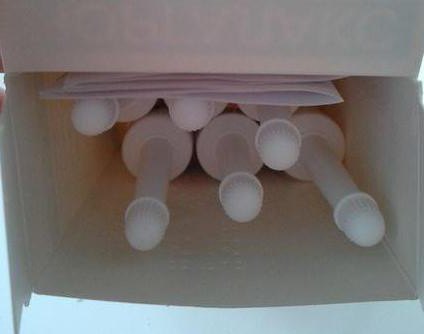
Глицерин способствует раздражению кишечных стенок. В результате этого начинается интенсивное сокращение, усиливается перистальтика. Каловые массы постепенно приближаются к анальному отверстию, воздействуя на нервные окончания.
Также главное действующее вещество препарата способствует задержанию воды. Результатом становится то, что каловые массы приобретают больший объем и постепенно размягчаются. Несмотря на большое количество содержимого кишечника, оно выводится легко и без особого дискомфорта.



